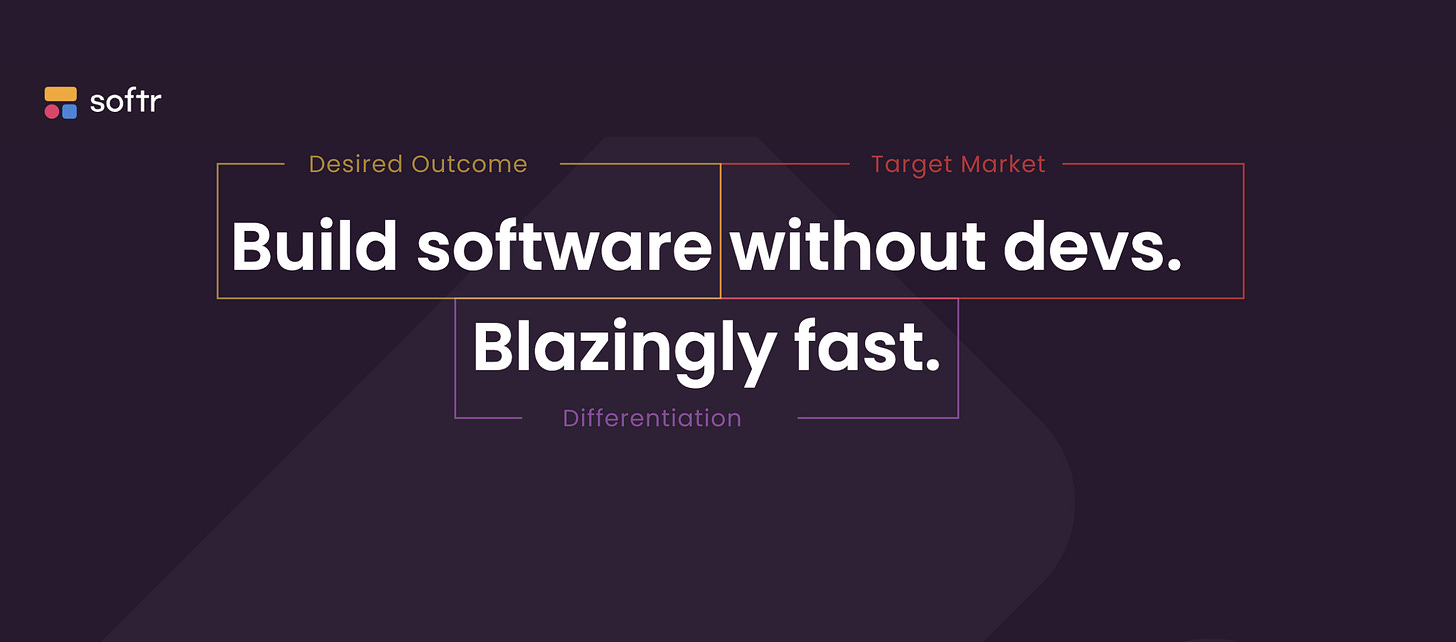NEVER Silo Marketing & Sales From Your Product Work
Why Website Copy Can Make or Break Your Product Business
The copy on a website is not just “marketing speak”.
In fact, it’s a core part of product work.
It actually defines product work & provides a guiding light for every opportunity, every feature, every solution we develop.
But why? And how?
Let’s jump in:
The Minimal Viable Offer
For the last 15 years, it has been fashionable to throw the idea of an MVP around, a Minimal Viable Product:
”Let’s just get an MVP out there.” or “It’s just an MVP. We’ll improve it.”
For reasons I go into in another article, the MVP is rarely minimal, rarely viable (i.e. actually good enough to deliver value) & teams tend to jump straight to building a full, custom-coded application.
Nowadays, however, in a market that has 16x more products in the world than just 10 years ago - and therefore 16x the competition - there is a growing backlash against this model.
Instead, as Gigi Levy-Weiss (NFX Partners) points out:
“We must earn the right to build”.
Which is where the MVO comes in:
“A statement outlining what value we will deliver to our audience & how we will deliver that value in a unique way.”
An example:
Softr: A Case Study in The Value of A Winning MVO
When we then put the MVO on a landing page & reach out to our target market to come & visit that landing page, we achieve two essential things:
Validation: We can quickly get signal from the market that what we are proposing to offer them is in fact valuable i.e. they are interested in our offer. For example, do young professionals actually want “financial freedom”? And are they convinced (or at least intrigued) by the way we deliver that (“automated, inflation-proof investments”? If not, we sure as hell shouldn’t be building - let alone thinking about - any solution
Product alignment: The other value of the MVO is that it provides us with very strong internal alignment. Why? It is essentially a reflection of our product strategy (i.e. what we will - & will not - focus on in order to win in this market). If our whole organisation is clear that we are focused on delivering “financial freedom” through “automated, inflation-proof investments”, it means our teams are going to build more things & focus on more initiatives that deliver that outcome (not a load of other things they could be distracted by).
Softr provides us with a great example of the MVO in practice. Here’s the MVO on their homepage: “Building software without devs. Blazingly fast.”
Now let’s break it down to highlight why it’s a powerful MVO:
👉 Target Market: Clear signal this is for non-technical builders. Note we don’t also need to explicitly call the target market out (e.g. write “we help non-technical builders achieve…”)
👉 Desired outcome: Really simple: Building software. The addition of “without devs” also implies less cost, less effort, less time
👉 Differentiation: Quite simply, speed. This is made more credible by explicitly stating no need for devs (and therefore, custom code). It is also reinforced by the fact that, sure, there are other no-code tools, but it’s addressing the customer frustration that many of these (such as Bubble) are quite cumbersome & complex.
Softr doesn’t talk about all its amazing features. Or list a load of use cases. It focuses on the core of a great product strategy to win the no-code market:
Who they are targeting, what outcome that target market ideally wants, and how they deliver that outcome in a uniquely valuable way.
That combo has helped them 1) attract & convert the right audience and 2) has provided them with strong internal alignment to consistently drive towards actually delivering on what they promise in that MVO.
And that - promising something valuable, validating that the audience wants what you promise, then being laser-focused on delivering it - is the essence of great product work.





